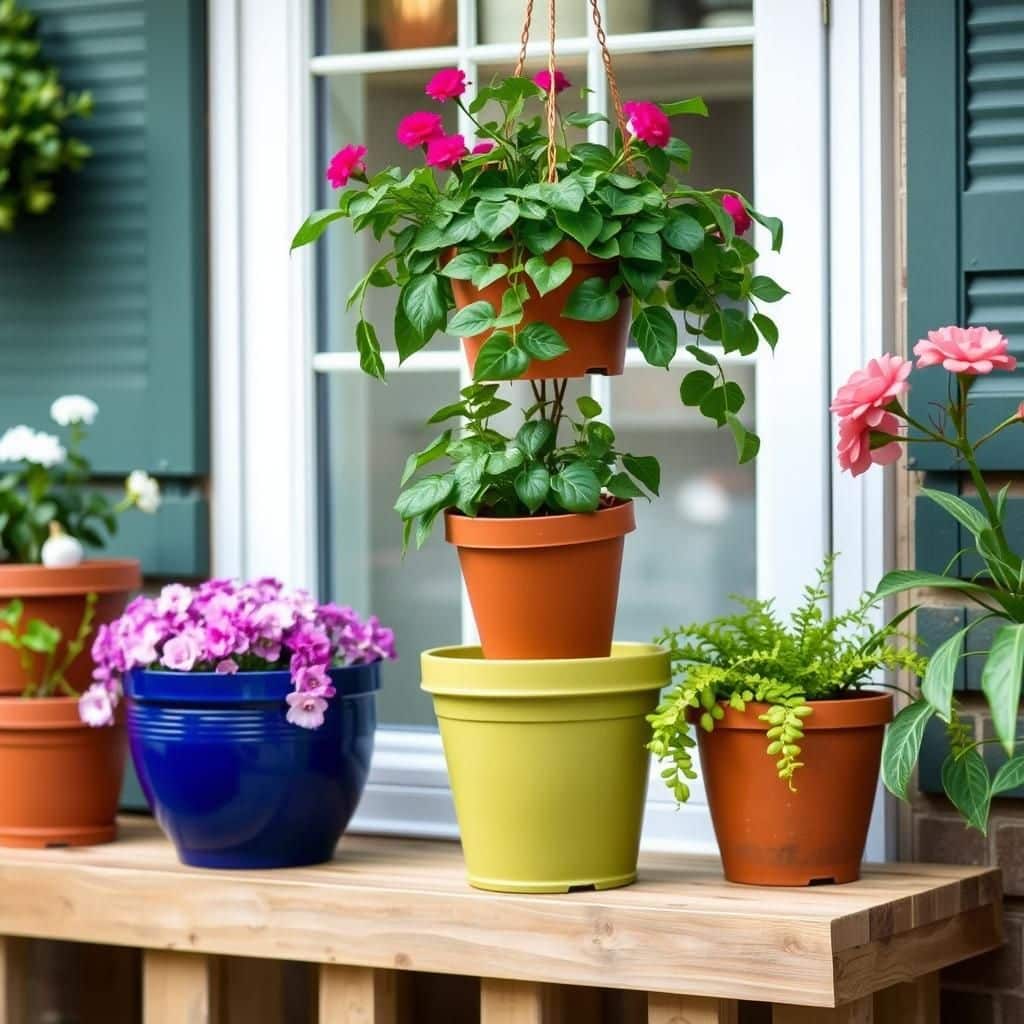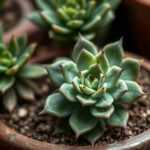Top Tips for Selecting the Best Garden Pots and Hanging Baskets for Your Outdoor Space

Choosing the right garden pots and hanging baskets is essential for creating a stunning outdoor space. With a wide variety of materials, sizes, and designs available, making a decision can feel overwhelming. However, selecting the perfect containers can enhance your plants’ growth and add a touch of style to your garden. In this article, we'll explore top tips to help you choose the best pots and baskets that suit your personal taste, fit your outdoor environment, and cater to the specific needs of your plants. Whether you're a seasoned gardener or a beginner, these insights will help you elevate your gardening experience.
Choosing the Right Garden Pots and Hanging Baskets
When selecting the perfect garden pots and hanging baskets, it's important to consider factors such as material, drainage, and style. Different materials like ceramic, plastic, or metal each have their advantages and disadvantages; for instance, ceramic pots are aesthetically pleasing but can be heavy, while plastic options are lightweight and more durable. Ensuring proper drainage is crucial for plant health, as stagnant water can lead to root rot. Moreover, the style of pots and baskets should complement your garden or indoor décor; whether you prefer a modern look or a rustic charm, there are countless options available to enhance any space.
Materials for Garden Pots
The choice of material for garden pots can significantly impact both the appearance and functionality of your plants. Ceramic pots are often favored for their artistic designs and breathability, allowing air to reach plant roots. Conversely, plastic pots are popular for their durability and lighter weight, making them ideal for hanging baskets and areas subject to wind. Metal pots, while stylish and modern, can heat up quickly under the sun, potentially harming plant roots. Understanding the properties of each material helps in making an informed decision that suits your horticultural ambitions.
Types of Hanging Baskets
Hanging baskets come in various styles, including classic, self-watering, and coconut liner baskets. Classic hanging baskets are typically made of wire and lined with moss, allowing for good drainage. Self-watering hanging baskets feature a reservoir system that provides consistent moisture, ideal for busy gardeners who may forget to water regularly. Coconut liner baskets, offering an eco-friendly option, are made from sustainable materials and provide excellent moisture retention while also promoting aeration for plant roots.
Drainage Solutions for Pots
Effective drainage is essential for preventing root rot and ensuring the overall health of your plants. Many pots come with drainage holes, but in cases where they do not, adding a layer of gravel or small stones at the bottom can facilitate excess water runoff. Additionally, using potting mix designed for your specific plants helps create an ideal environment that retains moisture without becoming waterlogged. Proper drainage techniques not only enhance plant well-being but also simplify care routines.
See also:
Design and Aesthetic Considerations
When it comes to design, garden pots and hanging baskets can serve as focal points in both gardens and interiors. Opting for a cohesive color scheme or contrasting textures can elevate the overall look of your space. For instance, sleek, modern pots might contrast beautifully with vibrant flowers, while rustic baskets can enhance natural settings. Considering the size and scale of your plants in relation to your pots is also crucial; oversized pots may dwarf smaller plants, while tiny pots might overcrowd larger blooms.
Care Tips for Pots and Baskets
Caring for your garden pots and hanging baskets is key to sustaining plant life. Regular watering schedules tailored to the needs of each plant species are essential. It’s also advisable to fertilize plants periodically, using appropriate fertilizers for different types of plants. Regular pruning and deadheading can encourage new growth and extend bloom time. Furthermore, keeping pots clean removes debris that can harbor pests, while periodically checking for root health can prevent future issues.
| Material | Advantages | Disadvantages |
|---|---|---|
| Ceramic | Stylish, breathable | Heavy, can crack |
| Plastic | Lightweight, durable | Less aesthetic appeal |
| Metal | Modern look, durable | Can heat quickly |
Understanding Material Choices for Garden Pots
When it comes to selecting the best garden pots and hanging baskets for your outdoor space, understanding the material choices available is crucial. Different materials, such as ceramic, plastic, metal, and wood, not only affect the aesthetic appeal of your garden but also impact drainage, weight, and durability. For instance, ceramic pots are often heavier and provide excellent insulation for plant roots, while plastic pots are lightweight and come in various designs but may require more attention to drainage. It's important to select materials that are suitable for your specific climate and the types of plants you intend to grow.
Considering Drainage Options
Proper drainage is a vital factor in selecting garden pots and hanging baskets to ensure your plants remain healthy. Pots without adequate drainage can lead to waterlogging, which in turn can cause root rot and kill your plants. Look for pots that have drainage holes at the bottom or consider adding a layer of rocks or gravel to improve drainage in pots without them. Ensuring that water can flow freely from the soil will help maintain the right moisture level for your plants.
Size Matters: Selecting the Right Dimensions
The size of your garden pots and hanging baskets directly influences the growth and health of your plants. Smaller pots may restrict root growth and limit nutrient uptake, while excessively large pots can retain too much moisture, leading to potential overwatering issues. Consider the adult size of the plants you intend to grow, and choose pots that will accommodate their root systems adequately. A good rule of thumb is to use at least twice the size of the root ball of the plant to allow ample space for growth.
See also:
Color and Style to Enhance Your Space
The color and style of your garden pots and hanging baskets can significantly enhance the overall aesthetic of your outdoor space. Brightly colored pots can add a pop of color, while neutral tones can create a more sophisticated look. It's important to choose pots that complement both your plants and the surrounding environment. Think about the design elements of your garden, such as the architecture of your home and the landscape features, to find pots that harmoniously fit into the broader design.
Insulation Properties of Different Materials
The insulation properties of garden pots and hanging baskets can greatly affect plant health, especially in regions with extreme temperatures. Materials like terracotta and ceramic pots can help regulate soil temperature, preventing overheating during hot summers and frosty conditions in winter. In contrast, plastic pots may not offer the same level of insulation, leading to potential stress for temperature-sensitive plants. Understanding how different materials insulate can help you select the right pots based on your local climate conditions.
Budget Considerations for Your Garden Setup
Your budget plays an essential role in selecting garden pots and hanging baskets. Prices can vary significantly based on material, size, and design. It's crucial to find a balance between quality and cost, as investing in durable, high-quality pots can save you money in the long term by reducing the need for replacements. Consider shopping at local nurseries, garden centers, or online retailers to compare prices and find affordable options that still meet your aesthetic and functional needs.
Questions from Our Readers
What materials are commonly used for garden pots and hanging baskets?
Most garden pots and hanging baskets are made from durable materials such as ceramic, plastic, metal, and wicker. Each material has its own benefits; for instance, ceramic pots are often more decorative and retain moisture better, while plastic pots are lightweight and come in various designs.
How do I choose the right size pot or basket for my plants?
Choosing the right size involves considering the growth potential of the plant and ensuring it has enough room for its root system. A general rule is to select a pot or basket that is 1-2 inches larger in diameter than the plant's current container to allow for healthy growth.
See also:
What are the best plants for hanging baskets?
The best plants for hanging baskets include trailing species such as petunias, bacopa, and fuchsia, which create a beautiful cascading effect. Additionally, you can combine filler plants with spillers to add visual interest and create a vibrant display.
How often should I water my garden pots and hanging baskets?
Watering frequency depends on factors like plant type, size of the pot, and weather conditions. As a general guideline, it's best to check the moisture level by sticking your finger into the soil; if it feels dry an inch below the surface, it’s time to water.

If you want to read more articles like Top Tips for Selecting the Best Garden Pots and Hanging Baskets for Your Outdoor Space, we recommend you check out our Pots category.
Leave a Reply
Related Articles